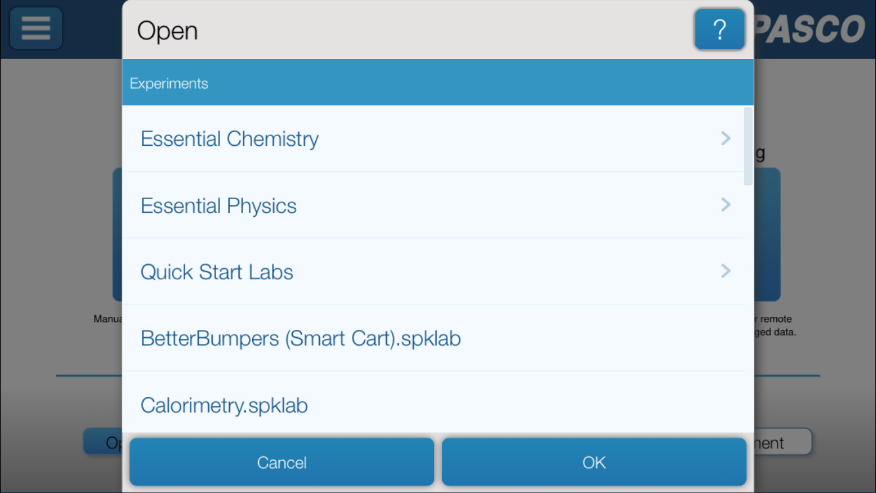

(This process should be repeated before every data run, just to be sure.) There may be a non-zero force value displayed even after this process note this value.


Click on "Hardware Setup" again to hide this display. Click on the "A" port on the interface box, in the drop-down window, select "Force Sensor, Economy." The interface box window should now depict the "A" port connected to a force sensor icon.
#Pasco capstone box Bluetooth#
From "Tools" on the left-hand side of the screen, click on "Hardware Setup," and click to unhighlight the Bluetooth button to stop it from looking for wireless devices.
#Pasco capstone box software#
#Pasco capstone box how to#
Students learn how to handle data subject to random experimental errors by using spreadsheets to calculate the average and standard deviation of repeated measurements, and to display these using error bars on graphs. Students learn how to use sensors to measure forces. Students work in (self-assigned?) groups to understand how to apply Newton's laws to analyze the behavior of Amonton's first law of friction. Data subject to random experimental errors can be characterized statistically (average, standard deviation) and represented graphically using error bars. The maximum static friction force is proportional to the normal force for an object on a horizontal surface (Amonton's first law of friction).

Force sensors can be used to measure weight and tension forces. The forces acting on a stationary (or constant motion) object must cancel each other (zero net force, due to Newton's first law). "750 Interface" box, power and USB cables Table clamp, right-angle clamp, rods (for hanging force sensor) Guillaume Amontons, "Amontons' Laws of Friction," late 17th century. "Kinetic friction is independent of the sliding velocity." "The force of friction is independent of the apparent area of contact."ģ. "The force of friction is directly proportional to the applied load."Ģ.


 0 kommentar(er)
0 kommentar(er)
